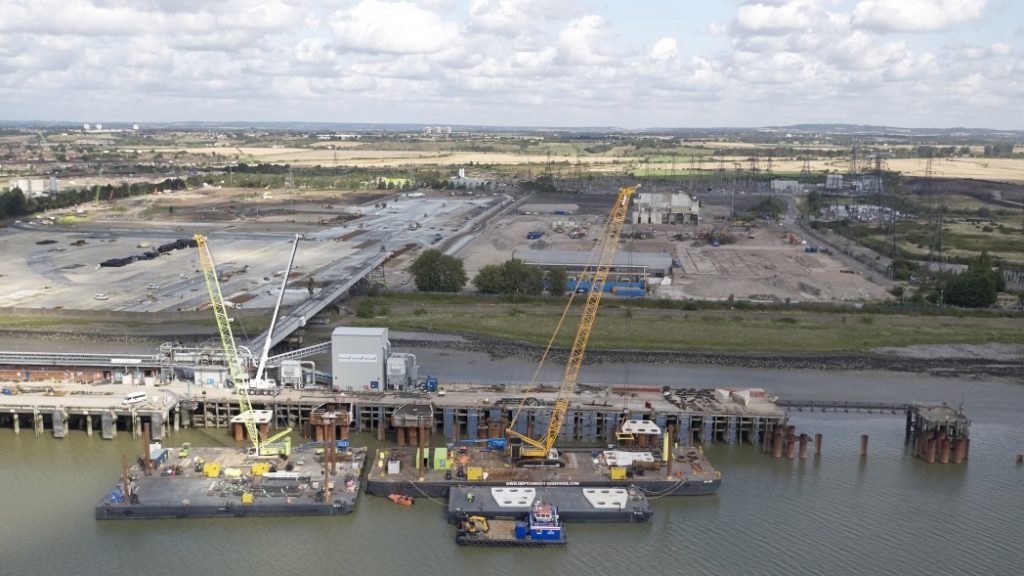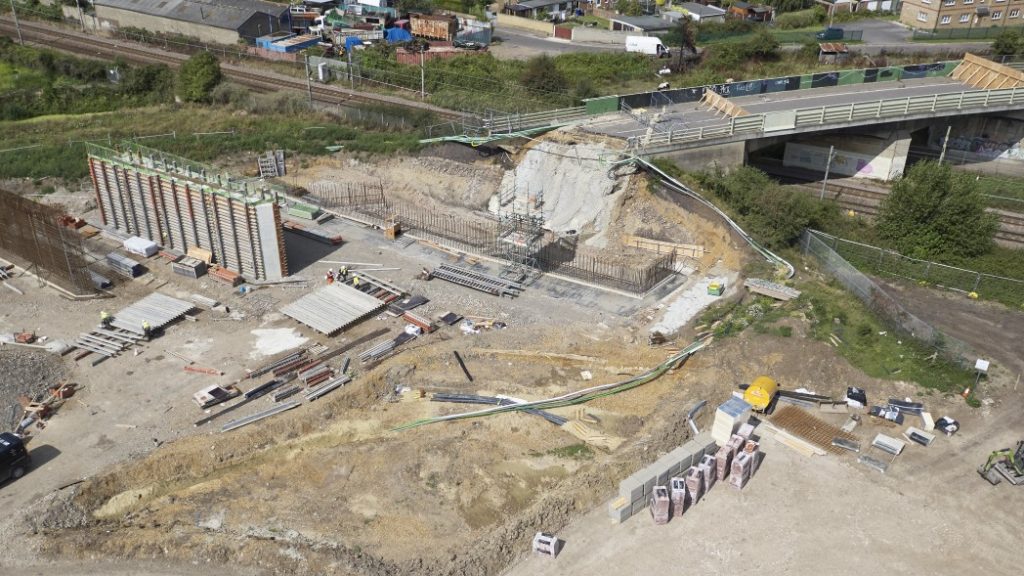
Tilbury’s Concrete ‘Carpet’ – A World First?
16/11/2020 - posted in Civils, HBPW News, Industrial, Marine, UncategorisedTilbury’s new £250m port terminal on the River Thames in Essex has a special ‘carpet’ that has all the hallmarks of an engineering ‘World First’, thanks to innovative thinking by Paul Withers and his mission to create a super strong concrete hard-standing.

The ‘nationally significant’ infrastructure project on land once occupied by Tilbury A and Tilbury B power stations, is being spearheaded by Port of Tilbury London Limited (PoTLL) and represents an extension to existing operations.
However, it is a 22-hectare section of the huge ‘Tilbury2’ site that has created interest among engineers. Paul Withers takes up the story.
“Along with GRAHAM we have produced a virtually jointless concrete hard-standing area spanning the full 22 hectares, probably the first of its type in the world.
“The drivers behind the ‘seamless’ design were threefold: in some areas of the concrete hard standing we had relict, heavily piled reinforced concrete hard foundations. Elsewhere, the hard standing had to overlay 9-10m of soft to very soft ‘toothpaste consistency’ clay which, in turn, was overlaid by a 1.5m crust of competent material.
“Finally, in certain sections of the site, competent material and very soft clay had been pre-consolidated by coal heaps from the former Tilbury B Power Station. Consultants had also predicted that settlements on the soft to very soft clay, due to materials stored on the hard standing, could be in the order of 600mm.”

However, subsequent surcharge loading investigations put this figure at nearer 25mm.
“Ultimately, we had to design the hard standing to accommodate extremely hard and soft areas as well as sections where very little settlement was expected due to pre-surcharging by coal,” added Paul.
“This meant producing the engineering equivalent of a flexible, undulating ‘carpet’ or, technically speaking, a structurally plastic surface, and we achieved this by eliminating ‘joints’ across the 22-hectare area.
“This has huge benefits because joints are vulnerable to damage and by eliminating them, this massive hard standing is more able to resist the heavy loads imposed on it by reach stackers, HGVs and MAFI trailers. As far as we know, this is most likely a world first. Can anyone out there refute this?”
The proposed main components of Tilbury2 include:
- A Roll-On/Roll-Off (RoRo) terminal for importing and exporting containers and trailers and also containing a warehouse. This will be located at the southern part of the site.
- A “Construction Materials and Aggregates Terminal” (CMAT) for handling and processing bulk construction materials. This will be located at the northern part of the site.
- Other parts of the site will be used for storage of bulk goods or vehicles.
Once complete ‘Tilbury2’ will create several hundred new jobs as well as safeguarding the Port’s existing workforce of 700+ jobs. It will also be the UK’s largest unaccompanied freight ferry port.
